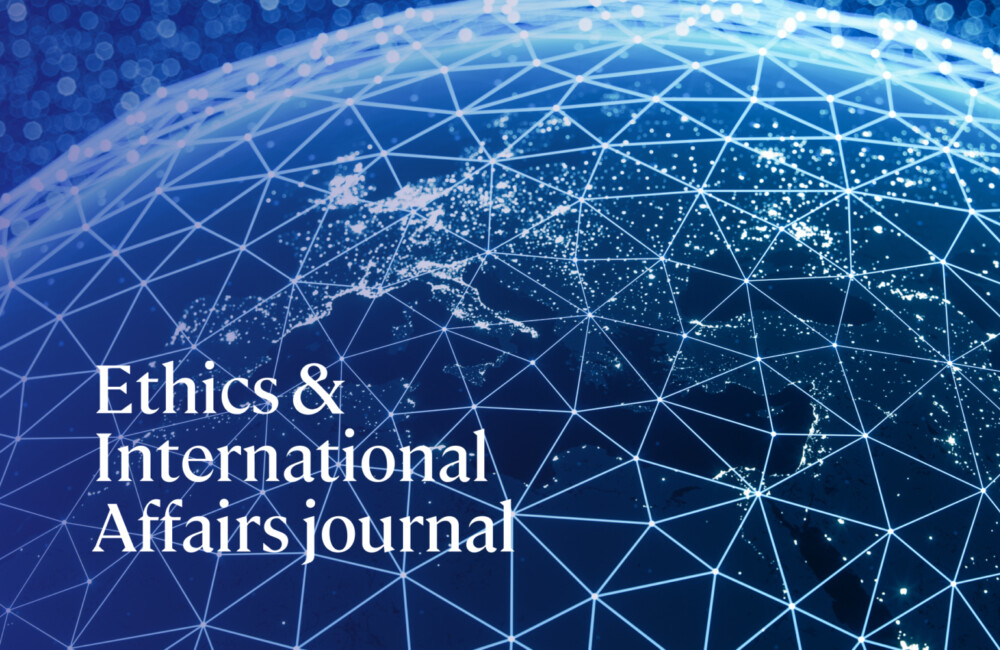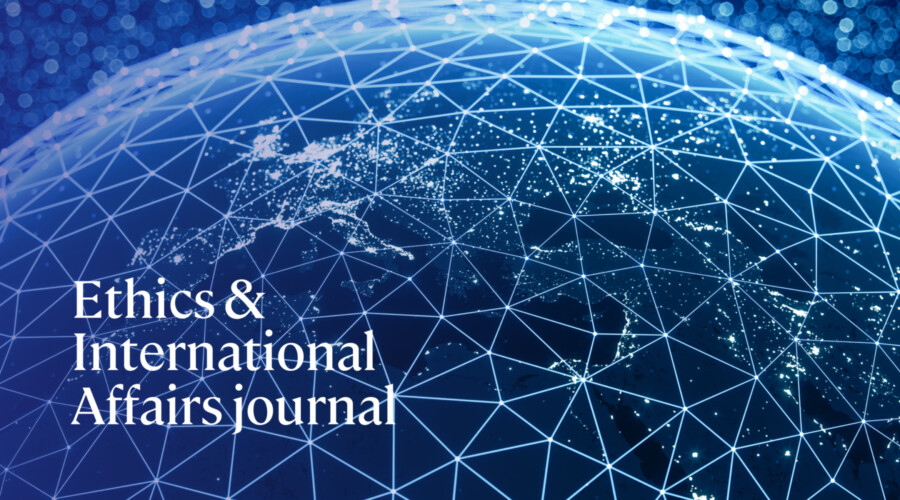Between 1989 and 1993 the United Nations authorized a number of peacebuilding operations to help implement peace settlements in war-torn states, including Cambodia, El Salvador, Liberia, Namibia, Nicaragua, Mozambique, and Rwanda. The launch of those operations was a significant departure from the limited peacekeeping missions during the cold war, which typically involved the establishment of buffer zones between conflicting parties and the monitoring of cease-fires. With the addition of political and socioeconomic dimensions, peacebuilding operations in the early 1990s were far more complex. In particular, the new operations involved the monitoring of postconflict elections, demobilization of former combatants, support for the return and resettlement of refugees, human rights investigations, and in some cases the pursuit of international criminal justice, as well as market-based economic reforms. The United Nations came increasingly to share responsibility for these tasks with a host of regional actors, nongovernmental organizations, diverse national development agencies, and international financial institutions.
If these new operations were accompanied by high hopes regarding the ability of the international community to bring lasting peace to postwar territories, by the middle of the decade that initial enthusiasm was evaporating. In political as well as academic circles, concerns emerged that, for all their increased complexity, the first generation of post-cold war peacebuilding operations had been too limited, too short, and too narrowly focused on rapid political and economic reforms. In some instances, attempts to rely on quick liberal "fixes," such as elections, and to present those fixes as indicators of success had backfired in tragic ways. In Angola, for instance, elections served only to catalyze further violence, while in Rwanda the peace settlement in which the international community had placed so much hope was unable to prevent genocide.1
In response to the limitations and failures of these operations, international actors (both organizations and states) soon began to focus their attention on more comprehensive approaches to postwar statebuilding.2 This revised approach was reflected, for instance, in the practices of the international administration set up in Bosnia in 1995. The mission was initially limited both in scope (with the role of internationals largely confined to monitoring the parties' implementation of the Dayton Accords) and in time (scheduled to last until the end of 1996). Yet the disappointing result of the postwar elections organized with the support of the international community, and more broadly the lack of significant progress in key areas of reconstruction, led the international community to rethink its approach. The UN-sponsored international administration remained in Bosnia in order to play a heavier role in reconstruction around liberal-democratic principles. By the end of the decade comprehensive missions had also been launched in Kosovo, East Timor, Burundi, and Sierra Leone.
Even against a background of this variation, these missions had the common goal of enhancing governance capacity in territories emerging from conflict. Thus, missions that had at least partly been justified by the need to protect individuals—the victims of state-sponsored violence—became increasingly focused on efforts to (re)build states. With the growing focus on statebuilding as a particular form of peacebuilding,3 the state-capacity enhancing agenda expanded to include attempts to build a professional civil service, intrusive economic and financial reforms, the creation of new legal institutions, the pursuit of transitional justice, and security-sector reform.
International administrations are perhaps the most extreme version of contemporary international involvement in postconflict reconstruction, primarily because they involve a de facto suspension of sovereignty. As such, they have been at the heart of heated debates about the proper role of international actors in statebuilding, and have often been criticized as unacceptable modern iterations of colonialism. But beyond the particular dilemmas associated with international administrations, the very concept of statebuilding raises its own complex set of challenges—issues such as the lack of coordination among agencies or the difficulty of identifying an appropriate exit strategy. In many ways, those issues stem from the profound tensions associated with international involvement in reconstruction: the values upheld by international actors can clash with local norms; the fulfillment of immediate needs may complicate the long-term process of reconstruction; tensions may arise between the key goals of reconstruction (such as justice vs. stability); and so on.4
Scholars of international relations have responded with intense debates about the rights and duties of international actors engaged in postconflict reconstruction and, more generally, about the appropriateness and desirability of international involvement in statebuilding. A central feature of these debates is the opposition between, on the one hand, a portrayal of statebuilding as a rational and ethically defensible international response to the complex problems of the postconflict landscape,5 and, on the other hand, an interpretation of international involvement in statebuilding as part of a hegemonic project that fails to respect the rights and dignity of the individuals who live in countries subject to reconstruction.
Other scholars criticize international involvement in postconflict reconstruction on instrumental rather than ethical grounds. Jeffrey Herbst, for example, argues that allowing conflicts to burn themselves out and letting states fail would be a more effective strategy for achieving lasting results.6 More recently, a number of scholars—seeking to transcend the dichotomy between advocates and critics of intervention—have applied systematic analysis of the merits as well as tensions and contradictions associated with international involvement in postconflict reconstruction, and have sought to identify ways in which some of those tensions might be minimized.7
While we welcome this effort, our objective in this collection of articles is to focus more explicitly on the ethical assumptions that underpin the views of those who support and those who condemn practices of reconstruction, as well as those who seek to bridge the divide. As hinted above, the challenges involved in peacebuilding and statebuilding often reflect a deeper problem of conflicting values—not only between the international community and the target states, but also among international agents themselves. Moreover, when decisions are made to manage difficult trade-offs within the statebuilding agenda, such choices often draw upon normative judgments about both the appropriate ends and means of reconstruction, and the likely consequences of certain strategies.
This invocation of values and judgments suggests that the extension and deepening of normative theorizing about postconflict reconstruction is long overdue. To date, there have been three main bodies of work in this area. The first body of literature focuses on international trusteeship. This discussion centers on the question of whether (and under what circumstances) outsiders can legitimately take over the reins of government. The idea and contemporary practice of trusteeship have been criticized by such scholars as William Bain and Robert Jackson, who argue that trusteeships inevitably violate key principles of international society.8 From their perspective, international trusteeship reflects and reinforces an unacceptable degree of paternalism, and infringes on the sovereignty and right to self-determination of the peoples of war-torn territories. By contrast, several legal scholars and political scientists argue that contemporary forms of international trusteeship need not involve unacceptable forms of paternalism nor violate international principles. For example, Lene Søbjerg argues that the essence of a modern trusteeship is the expansion of freedom: according to her, modern trusteeships can contribute to the reestablishment of liberty, stability, and peace in territories emerging from conflict.9
A second body of normative literature on postconflict reconstruction revolves around the policy debate over the "responsibility to rebuild." In late 2001 the independent International Commission on Intervention and State Sovereignty (ICISS) issued its report The Responsibility to Protect, which sets out the view that if the international community seeks to claim a responsibility to protect civilians through the use of force, it is obliged also to consider the aftermath of such military measures.10 Thus, according to the ICISS report, in cases when the international community needs to resort to military intervention to end a humanitarian crisis, there must be genuine international commitment to helping to rebuild peace, and to the promotion of good governance. Sensitive to the potential charge of excessive intervention, the Commission insisted on the importance of ethical behavior on the part of international actors engaged in reconstruction. As stated in the report, "the responsibility to rebuild...must be directed toward returning the society in question to those who live in it and who, in the last instance, must take responsibility together for its future destiny."11 However, this debate has been limited, as most of the policy work that has followed the report has engaged with the "response and prevention" parts of responsibility to protect, and has paid insufficient attention to the challenges and dilemmas associated with practices of postconflict reconstruction.
A third body of normative theorizing about postconflict reconstruction concerns jus post bellum, or justice after war. This literature begins with the recognition that most normative theorizing with respect to conflict has centered on the two other dimensions of the just-war framework: jus ad bellum (the rules that govern the justice of going to war) and jus in bello (the rules used to establish whether a war is fought using just means). This relative lack of attention to the post bellum dimension is both surprising and problematic, not least since political leaders often invoke postconflict developments as part of their justification for supporting or condemning a war. Despite efforts to keep each dimension of a conflict morally isolated from the rest, it is clear that (for example) judgments about post bellum have a bearing on ad bellum, and vice versa. As Michael Walzer reminds us, "you can fight a just war, and fight it justly, and still make a moral mess of the aftermath"—for example, by seeking revenge against the population of the defeated state or failing to help those rescued to rebuild their lives.12
The debate over the content of jus post bellum seems to have had two main phases. The scholars who belong to the first phase attempted to lay out a rather restricted view of jus post bellum, based on the achievement of minimal justice.13 For them, postwar activities would be restricted to redressing the worst effects of military action, ensuring that enough resources and capability remain in place for the country to reconstruct itself, and in some cases meting out punishment (for example, to the leaders of a genocidal regime). This restricted view of jus post bellum focuses on the immediate aftermath of conflict, and tends to be informed by a concern to avoid excesses by international actors engaged in reconstruction. The second phase of normative thinking on these issues addresses whether jus post bellum should be extended beyond considerations of minimal justice, and on how one might formulate a broader approach within the confines of just war theory.14 If the goal of a just war—even as articulated by its earliest proponents, such as Augustine—is the creation of a just peace, there would certainly seem to be a powerful case for developing a broader approach. In this more extensive scenario, jus post bellum is about more than redressing the injustice that started a conflict: it also involves seeking to bring about longer-term stability and compensating for the destruction wrought during the conflict. In other words, victors have special responsibilities that go beyond the idea of narrow rights vindication.15
But traditional just war theory can only get us so far. If, as Walzer admits, the positions that we have taken on the justice of the cause of a war will not necessarily determine the positions we take (or should take) on the justice of rebuilding,16 there is an open question as to whether we should hold rebuilders to account for the appropriateness of their actions, regardless of whether the initial war was itself just or fought justly. In short, if a just peace cannot make an unjust war just,why should rebuilders bother to redeem themselves through postconflict engagement and investment? Alex Bellamy responds that we should treat the legitimacy of the war and the legitimacy of the peace as separate matters.17 Once we allow this separateness, however, we have to admit a conception of the victors' duties that invokes norms and aspirations that do not fall within the framework of just war theory. Where do these norms and aspirations come from? And how can they be justified?
Jus post bellum is also insufficient in its tendency to conceptualize war in traditional terms—as conventional interstate war. The framework leads scholars to pay insufficient attention to cases of humanitarian intervention or regime change, despite their newly prominent place in world politics. For this reason, these are the kinds of scenarios we consider in the following four articles. Moreover, whereas jus post bellum tends to conceptualize rebuilders as the "victors" in (a conventional) war, these articles recognize that those engaged in reconstruction may not have been parties to the original conflict. This enlargement of the circle of rebuilders raises difficult questions about how the burdens and benefits of rebuilding might be distributed. In order to address those questions, and others, we need to look beyond the existing literature. It is to this end that we offer the following contributions.
NOTES
1 See, for instance, Christopher Clapham, "The Perils of Peacemaking," Journal of Peace Research 35, no.2 (1998), pp. 193–210.
2 For an exploration of the evolution of peacebuilding operations, see Roland Paris and Timothy D. Sisk, "Introduction: Understanding the Contradictions of Postwar Statebuilding," in Roland Paris and Timothy D. Sisk, eds., The Dilemmas of Statebuilding: Confronting the Contradictions of Postwar Peace Operations (New York: Routledge, 2008).
3 Thomas Weiss, "The Sunset of Humanitarian Intervention? The Responsibility to Protect in a Unipolar Era," Security Dialogue 35, no. 2 (2004), p. 138.
4 On this, see in particular Paris and Sisk, Dilemmas of Statebuilding.
5 Michael Ignatieff, Empire Lite: Nation-Building in Bosnia, Kosovo, and Afghanistan (London: Vintage, 2003), p. 80. For a far more critical account see, e.g., David Chandler, Empire in Denial: The Politics of Statebuilding (London: Pluto Press, 2006).
6 Jeffrey Herbst, "Let Them Fail: State Failure in Theory and Practice: Implications for Policy," in Robert Rotberg, ed., When States Fail: Causes and Consequences (Princeton, N.J.: Princeton University Press, 2003).
7 See Richard Caplan, International Governance of War-Torn Territories: Rule and Reconstruction (New York: Oxford University Press, 2006); and Paris and Sisk, Dilemmas of Statebuilding.
8 Robert Jackson, The Global Covenant: Human Conduct in a World of State (New York: Oxford University Press, 2000); and William Bain, Between Anarchy and Society: Trusteeship and the Obligations of Power (New York: Oxford University Press, 2003).
9 Lene Mosegaard Søbjerg, "Trusteeship and the Concept of Freedom," Review of International Studies 33, no. 3 (2007), pp. 475–88.
10 International Commission on Intervention and State Sovereignty, The Responsibility to Protect (Ottawa: International Development Research Centre, 2001).
11 Ibid., p. 45.
12 Michael Walzer, Arguing about War (New Haven, Conn.: Yale University Press, 2004), p. 163.
13 Notable examples are Brian Orend, "Justice after War," Ethics & International Affairs 16, no. 1 (2002), pp. 43–56; and Gary J. Bass, "Jus Post Bellum," Philosophy & Public Affairs 32, no. 4 (2004), pp. 384–412.
14 This is the agenda of Alex J. Bellamy in "The Responsibilities of Victory: Jus Post Bellum and the Just War," Review of International Studies 34, no. 4 (2008), pp. 601–25.
15 This is precisely the type of scenario that is discussed in this issue by Mark Evans.
16 Bellamy, "Responsibilities of Victory," p. 624.
17 Ibid., p. 622.


